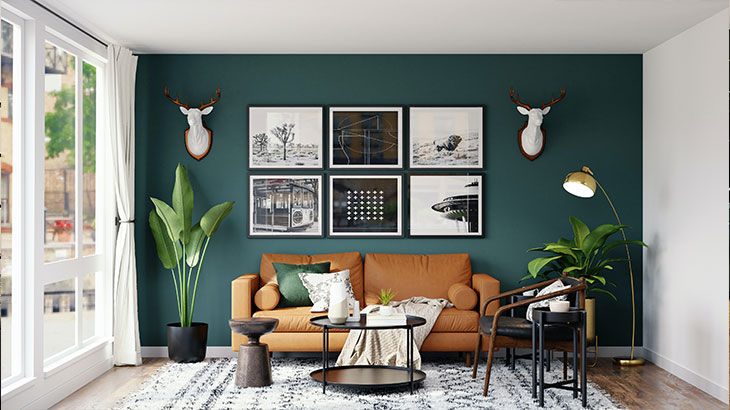In today’s world, especially in India, the scope of interior designing is wholly a new set to grow that’s emerging into the market with excellent growth prospects over a range of artistic fields. Over the coming years, Interior designing is expected to show high growth and continue to maintain its high growth trajectory.
To become a professional-level interior designer to design aesthetically pleasing spaces with your interior design ideas, you will require to be a part of interior design learning programs to knack the technical and design skills, probably required in interior designing. Hamstech Interior Design Courses would be the right choice for you if you are an interior design aspirant.
The demand for interior designers in India is rising as city slickers spend more on quality lifestyles and travel to tropical destinations. Furthermore, utilising limited space efficiently and effectively and with all the developments, it is emerging as a booming career option for those with a creative bent of mind.

The Best Suit for an Interior Design Career
- Interior design work involves designing properties like – homes and other commercial spaces and then creating a particular environment that clients desire.
- Thus, people sensing to commence a career path in interior design need to establish a passion and also a creative bent of mind.
- In addition, aspirants also need to have profound communication and management skills, since the job of an interior designer is to interact with the clients and contractors to deliver the desired designs.
- People also need to be good at budgetary management with expert knowledge of interior design materials in the market and people who possess these are valued highly in the interior designing industry in India.
- In addition to all these, paying attention to details and being creative is key to achieving success in the world of interior design.

Where Interior Designers are Employed?
Interior designers are hired in many different areas and the scope of interior design in India covers areas such as:
- Residential Projects – include houses, flats and other places used for domestic accommodation.
- Commercial Projects – This includes designing shopping malls, warehouses, cinema theatres, gyms, hotels and restaurants, pubs and cafes, schools and universities, health centres and hospitals, and nursing & care homes.
- Workplace Projects – include offices and factories of many other different types.
- Temporary Exhibitions – includes designing for art galleries, museums and a wide range of private and public projects, where interior designers are required to provide temporary designs.
Despite the competitiveness in this business, interior designers should now have a pertinent education combined with a degree or course in interior design and practical experience with designing and executing imaginative interior design projects.

Scope of Interior Designer Work in the Field
Designing interiors involves many processes to come up with an appealing interior design that the client is desired.
- In the first stage, interior designers set up a meeting with the clients to understand the client’s needs and requirements and budget as well. At this stage, interior designers understand what exactly the client requires and get as much information as possible from the client. This level necessitates excellent communication abilities, in addition to being able to gather and organize data.
- After the interior designer has determined the client’s needs and requirements after meeting with the client, they spend time on research for potential results that will fix the client’s design requirements and during this stage, interior designers allow for planning considerations and building regulations.
- Following comprehensive research, interior designers commence with crafting their initial proposal, including sketches and a detailed explanation of how they plan to take advantage of the space and the designs they have come up with.
- Along with the design plan, interior designers also come up with the cost and timeline for executing the proposed designs. Following the interior designer’s submission of the preliminary plan to the client, they will have a further meeting of brainstorming, and the initial ideas may be tweaked or the designs can remain the same depending on the client’s satisfaction.
- Then interior designers incorporate all the feedback from the client and recheck with the client again. If that’s ok with the clients, then interior designers bring the designs to life by making use of appropriate software that can help the client to see exactly how the space is used well.
- After the interior designer has obtained the final go-ahead from the client, designers work executing on the chosen interior design to come up with the final proposal.
- Interior designers then choose the most appropriate contractors and suppliers based on the budget to work and implement the designs at the site. During this stage, interior designers take the red flags raised by the client into account and modify the design plans accordingly.
Also Read: INTERIOR DESIGN CAREERS – INTERIOR DESIGNER SALARY IN INDIA

Wrapping Up
If you are here till the end, then probably you might be aspiring to become a professional interior designer. I’ll help you out with the best interior design college as well to start with.
Hamstech in Hyderabad with 30 years of experience, leading in the educational sector with creative courses. They provide ultimate knowledge in the desired fields with guidance from professionals and industry experts. You can choose among the 5 different interior design courses to start with and be part of the InteriYour Show to prove yourself.
Get set and download the Hamstech App or log in to www.hamstech.com and enrol for a course!

